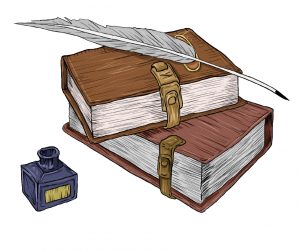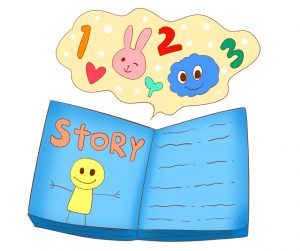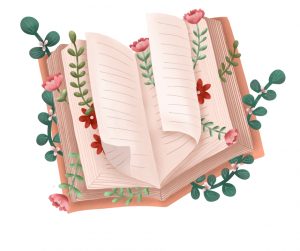How To Find The Theme of a Story/Book: The theme is a summary of a story’s principal idea. The overall message a writer wants readers to take away from the text is called the theme. This is the story’s meaning, which is expressed in the plot as well as the characters’ internal and exterior journeys. The plot is driven by the theme, which keeps the writer from straying from the core idea and keeps the novel on track.

To determine a story’s theme, you must first read the story and comprehend the fundamentals of characterization, plot, and other literary components. Ask yourself what the writer is trying to portray through the characters and events of the story as you try to find out the theme. We’ll go over how to figure out a story’s theme in detail in this post.
Recommended: Characteristics of A Drama
What is the theme of the story?
While the story’s topic encapsulates the story’s core themes, the author presents those thoughts in a variety of ways. A story’s theme is a universal idea that the reader can deduce from the story and is described through literary symbols that appear throughout the narrative.

The fundamental notion that runs through the plot and binds the various elements of the story together is called the theme of a book. The plot or moral lesson of a book is not the same as the topic of the book, yet the two are intertwined and important to create a broader story.
Recommended: Best Countries To Study Abroad 2022
6 Common Themes in Stories
The best story themes delve into universal human nature. As a result, it’s not surprising that numerous books may have the same fundamental premise. Each of the popular theme examples below portrays the human condition and provides readers with food for thought long after the story has ended. The following are six common story themes:
1. Good vs. evil
2. Love
3. Redemption
4. Courage and perseverance
5. Coming of age
6. Revenge.

Recommended: Best online universities to attend in the world 2022
How to identify the Theme of a Story
1. What does the story have to say about life, the world, or human nature: Most stories begin with a single notion. You could only have a glimmer of a plot or a glimpse into one of the characters, but chances are they already have something to say on a particular topic.
Many of the authors write because they have something to say about life, the world, or human nature, and they want people to experience the world through their eyes. When I’m reading a narrative, some of the first questions I ask myself are:
a. What is the author’s motivation for telling this story?
b. What is he trying to convey? What is He attempting to prove or refute?
c. Does it imply anything about life, the universe, or human nature? What exactly is it?
d. What are the topics that you are always thinking about?
e. What issues irritate them the most? (Rape, murder, animal abuse, marital troubles, disease, war, alcoholism, white lies, infidelity, and so on.)
f. What is a broad query or thought that you have about life?
g. What values does it hold personally? What virtues do you believe are underappreciated? Why?
h. What vices are it afraid of? Which vices does it abhor? Why?
j. What kind of world change would they wish to see? Why?
Your responses to these questions will almost certainly reveal the story’s central theme. But don’t worry if you don’t have one—there are two other approaches to come up with and develop your topic. Let’s get started on the next one.

Recommended: Best Arts Courses to Study in the University
2. How does the character change from beginning to end?: What happens in the plot does not represent the point of the story. Instead, the argument is delivered through the internal transformation of the character as a result of the plot’s events. This internal growth is described through your character’s arc.
In most cases, the character’s development throughout the novel is directly related to the message you wish to send to your audience. As a result, examine the following questions about the character:
a. Who is the main character of the story at the start?
b. How do the story’s events shape the character for the better or the worse?
c. What are their weaknesses and what prevents them from being happy or fulfilled?
d. Do they overcome their weaknesses in character and the hurdles in their path? So what?
e. What will he earn and lose by the end of the story?
f. By the end of the story, who has the character evolved into?

So, once you’ve answered these questions regarding your protagonist’s inner development, go back over what you’ve written and try to see any recurring themes. Check out these universal themes for some inspiration.
Recommended: Major Tools For Economic Analysis (Explained)
3. What’s the Genre?: Another technique to come up with a story’s theme is to think about the story’s genre. Each genre has its own “topic,” or overarching theme. As an example:
a. Action stories; Survival, life and death, courage, and good vs. evil are all explored in action stories.
b. Horror stories; Survival, life and death, fear, safety, and good vs. evil are all explored in horror stories.
c. Love stories; Intimacy, friendship, passion, and human connection are all explored in love stories.
d. Mystery stories; injustice, safety, and good vs. evil are all explored in mystery fiction.
e. Morality stories; Morality tales delve into concepts such as selflessness, selfishness, and right vs. wrong.
So, if the plot revolves around a murder mystery. So, what does it say about justice? Or perhaps murder? Is justice served in the story? Why, if so? How? To you, what does justice imply? What does the writing imply about love or human connection if it is based on romance? Does love triumph above all in the story? Why, if so? How? How do you define love? What does it have to say about coming-of-age if it’s a worldview story? What does it mean to you to mature? What does it mean to gain experience or wisdom? Why are you interested in this topic?
Recommended: Countries With The Best Education System in the World 2022
What is the significance of a theme in a story?
The theme gives the reader an understanding of how the story’s characters live, how they strive for good, how problems are resolved, and how all of these decisions are made in their life. The tale’s theme reveals what thoughts or topics are raised in the story by telling the reader what the story is about. The theme is portrayed through the dialogue, actions, and thoughts of the characters, as well as the events of the story.
The emotional development of the characters or the consequences of their actions is sometimes used to determine the book’s theme. The theme is how the story or poetry approaches some challenging ideas that appear in all literary works. Throughout history, the ideas represented in this list of literary topics have appeared in novels, memoirs, poetry, and short tales. All literary topics are broad and open, allowing writers to express themselves on these complex issues.
Recommended: Differences Between Subsistence and Commercial Agriculture
Conclusion
A story, especially if it’s a novel rather than a short story, often has numerous themes. Themes emerge over time in many stories, and you can only completely comprehend the underlying topic or subject if you read the novel or narrative thoroughly. Many stories have a central subject and multiple sub-themes that support it.
While your novel will most likely have only one major topic, various sub-themes may serve as supporting characters. These subsidiary ideas might complement your main theme and give your story more depth. At the very least, you should state what your story’s “primary topic” or core idea will be. I hope this was useful.

Edeh Samuel Chukwuemeka, ACMC, is a lawyer and a certified mediator/conciliator in Nigeria. He is also a developer with knowledge in various programming languages. Samuel is determined to leverage his skills in technology, SEO, and legal practice to revolutionize the legal profession worldwide by creating web and mobile applications that simplify legal research. Sam is also passionate about educating and providing valuable information to people.